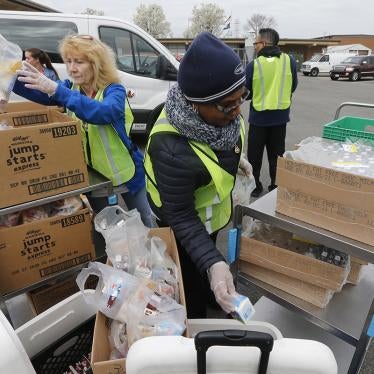UNESCO reports that 119 countries have closed schools nationwide since the COVID-19 outbreak, disrupting the learning and education of an estimated 897 million students. Millions more could be affected as more countries order school closures.
Every year, education systems in many countries are disrupted because of climate-change-related natural hazards and armed conflicts. But the world has not seen this level of disruption of education spread so uniformly since the Second World War. Most governments have opted to close schools for the legitimate public health aim of containing the spread of virus. But governments are still obligated to respect the right to education.
Responses to the COVID-19 crisis will vary depending on every education system’s capacity. In particular, they will depend on whether governments have robust emergency preparedness plans in place, whether technology is already fully embedded in the system, on internet availability within communities, availability of hard copies of learning material, and ensuring adequate working conditions for teachers and education staff.
The response is likely to expose deep education inequalities, including within a country’s education system.
Focus on most at risk students
In every country affected by COVID-19, governments should focus on mitigating the disproportionate effects on children and youth who already experience barriers accessing education, or who are at higher risk of being excluded for a variety of reasons. These include children with disabilities, students in remote locations, those who depend on schools for their only daily hot meal, and those whose families have lost income as a result of job cuts or precarious employment or are otherwise in a difficult situation.
In the United Kingdom, for example, Human Rights Watch and other nongovernmental organizations have sounded the alarm that closures could have an unintended impact on children from poor families who rely on schools for their main hot meal of the day. To help alleviate hunger if schools close, governments should consider simple one-off cash grants to families whose children receive free school meals, or who receive family-related social security assistance. They should also consider programs for schools to continue to distribute free lunches to children even if they aren‘t holding classes.
Focus on most accessible technologies and methods
UNESCO has recommended that countries “adopt a variety of hi-tech, low-tech and no tech solutions to assure the continuity of learning.” Although much focus has turned to online learning platforms, many public schools are not set up to use them or don’t have functioning internet access to support this. And neither do all students. Public schools in many, if not most, of the countries affected largely operate offline, particularly in low-income countries where the bulk of public schools are desperately under-resourced.
During mandatory closures, education officials and teachers should support students most at risk using any available technology, including telephones, secure text messaging apps, or other accessible chat functions, to reach out to them and keep them engaged. They should also ensure students receive printed or online materials on time, with particular attention to students with disabilities who require adapted, accessible material. They should also regularly check how parents or relatives are managing temporary home-based schooling conditions, and provide attention to the extent possible to families with low-literacy, parents of children with learning difficulties or disabilities, and parents who may not be as acquainted with the curricula used, including refugee or migrant parents.
In Lebanon, for example, where, public and private schools have closed down, classes have moved online. Amer Makarem, from the Youth Association of the Blind, told Human Rights Watch that online classes and distribution of lessons are generally not accessible for students with visual disabilities. Some teachers are sending lessons on WhatsApp, sometimes as image files that are not accessible. These serious shortcomings show the need to ensure that governments consult people with disabilities while defining emergency response plans, and ensure that online classes or any remote lesson plans are accessible to and inclusive of students with various types of disabilities.
Prepare for immediate steps once the crisis ends
Once schools reopen, school officials should go through their enrollment lists and check to see who hasn’t shown up at school. Upholding compulsory education obligations is key once a period of stability arrives– ensuring any potential barriers that may have arisen as a result of the crisis are addressed. This means that they will need to check on families and communities with children most at risk of dropping out, and ensure that all students return.
A lot of official school time will be lost as education systems scramble. Although online learning should be used to mitigate the immediate impact of school closures, governments should ensure that all children recover missed in-person class time once schools reopen. Governments should already start working with ministry officials, teachers’ unions and associations, organizations for people with disabilities, and relevant groups to design and adopt mitigation strategies.
These strategies should factor in plans for additional or supplementary teaching to recover teaching or contact hours lost, adjusting school calendars and exam schedules, and ensuring fair compensation for teachers and school personnel who are working additional hours, and exposing themselves to the virus by continuing to teach.
Finally, strengthen systems to sustain future crises
All governments should learn from this experience, and strengthen their education systems to withstand future crises, whether from disease, armed conflict, or climate change. This pandemic has shown that few governments have invested in their education emergency response, or have tested their capacity to manage disasters’ knock-on effects on education. Given the expectation of further shocks, this is not just desirable, but an imperative to protect children and youth’s right to education during unstable times.










